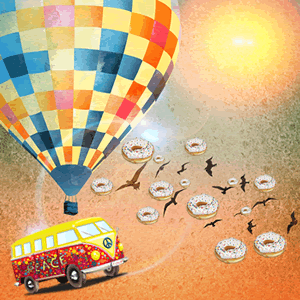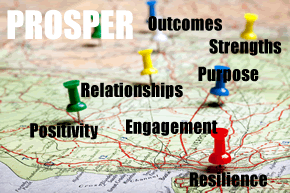Whether talking about ‘being as quiet as a mouse’ or ‘as busy as a bee’, we all use metaphors to help us describe and make sense of the world. Deliberately encouraging a focus on metaphors can provide a creative and inventive opportunity to solve problems, understand new concepts and even address social and psychological concerns.
A metaphor is a figure of speech in which a word or phrase that means one thing is used to describe an object or idea to which it is not literally applicable – for example: Shakespeare’s famous line: ‘all the world’s a stage’, or the notion of ‘exploding with great ideas’. Aristotle considered the use of metaphor, a sign of genius. He believed that someone who has the capacity to perceive resemblances between two separate areas of existence is someone demonstrating great ability. Aristotle also suggested that the use of metaphor made learning pleasant and was exotic and fascinating. Certainly many renowned scientists, authors and academics have used metaphor as a tool to understand challenging new concepts or theories over time. For example, Charles Darwin frequently used the metaphor of a tree to help understand evolution. Albert Einstein came up with an image of himself holding out a mirror while riding along on a beam of light to describe his theory of relativity and more recently, Edward Witten explained ‘string theory’ using a metaphor of ‘doughnuts in space’.
Sometimes simple, sometimes elaborate, metaphors provide an opportunity to look at all manner of problems with a fresh perspective and renewed energy. When we become immersed in a subject, it is easy to lose our ability to problem solve in a creative way, or indeed, to structure fresh ideas in a meaningful way. Metaphors provide a different perspective from which we can tackle a problem. They also provide a meaningful image for understanding how various elements of an idea or situation fit together. As such, they are a great tool for seeing the ‘big picture’ and developing creative solutions.
Metaphors are also great tools for helping children and adults take a fresh look at social and emotional issues and dilemmas in life. For example, many young children find a floating balloon metaphor helpful as a means of putting late night worries aside and peacefully falling to sleep. This useful metaphor requires that the child lies comfortably and imagines that they are holding a helium balloon on a string. To increase the vivid nature of the metaphor, the child can describe details of the balloon such as colour and size. The child then imagines their worries leaving their mind and entering the balloon. Once they have done this, they imagine letting go of the balloon and watching it float up into the air. As the balloon gets further away, it appears smaller and eventually disappears. This metaphorical approach to late night worries offers an effective means of putting troubling thoughts into perspective and even completely out of conscious awareness. As much as it is good to talk about things that our troubling us, there comes a time when the best thing we can do with our worries is to let them float away.
However, the therapeutic use of metaphors is certainly not confined to dealing with late night worries. It is a commonly used and often very effective, therapeutic tool for understanding and dealing with all sorts of issues. For example, understanding how it is possible to persevere with a task despite self-doubt can be imagined as driving a bus while ignoring the chatter of noisy passengers. Clinician Stephen Hayes introduced the increasingly popular Acceptance and Commitment Therapy with a metaphor of trying to survive quicksand. If we struggle to escape (fight with our worries) we sink far more quickly than if we can relax and lie still in the sand.
One of the most knowledgeable experts in the power of metaphor was mythologist and philosopher Joseph Campbell. Professor Campbell suggested that myths around the world describe the pursuit of a successful life as a ‘heroes journey’, a term he used to title his renowned book. ‘The Hero’s Journey’ describes how according to myths from all corners of the world we, as heroes, face many enemies, many challenges and often have to check our course. Yet, if we stay true to our path (live according to our passions), we eventually succeed. Film maker George Lucas was so taken with the idea of the hero’s journey; he came up with the story of Star Wars…now there’s a real roller coaster of a movie…
Dr Helen Street is an education consultant, cofounder and chair of The Positive Schools Initiative. Details about the Positive Schools conferences are available online at www.positiveschools.com.au and www.positivetimes.com.au



